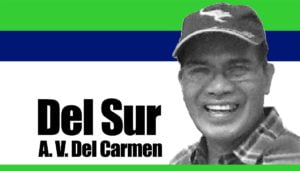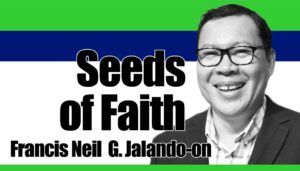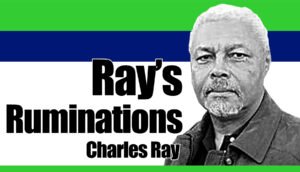- Rev. Francis Neil G. Jalando-on
The writer is currently the director of the Office of Communications of Central Philippine University in Iloilo City. He also serves as the pastoral director of Bacolod Bethany Church and a pulpit pastor of La Carlota Evangelical Church. He has organized a yearly pilgrimage tour to Israel since 2019.
***
The first Seeds of Faith Israel Tour that I hosted was last 2019. The next tour in 2020 was cancelled due to Covid-19. After waiting for three years, the tour pushed through – on Feb. 19-27.
On Feb. 20, the Seeds of Faith Israel Tour Group composed of 49 pilgrims from various parts of the Philippines arrived at Ben Gurion Airport in Tel Aviv, Israel via Emirates. After clearing the immigration, we met our guide who is popularly known as Israel’s Superguide, Marcos Aviel from Sar-el Agency, the partner of High Light Tours.
By the way, Filipinos do not need a visa to travel to Israel. We are given a 90-day visa-free stay because of a signed bilateral agreement between the Philippines and Israel in 1963. This stems from our vote on Nov. 29, 1947, when the UN General Assembly adopted Resolution 181. Philippine President Manuel Roxas instructed Carlos P. Romulo to cast the crucial vote at the UN to separate Israel from Palestine.
The Philippines was the only Asian country to support the creation of the state of Israel.
At the start of World War II, our country also gave sanctuary to Jewish refugees who fled Europe.
Day 1
Our first stop was the ancient port city of Jaffa, also known as Joppa. This city is mentioned in the Bible as the place where Jonah set sail before being swallowed by a great fish. We visited the house of Simon the Tanner beside the sea where Peter stayed and had a vision that led to the spread of Christianity to the Gentiles.
Along the narrow streets of the old city of Jaffa are picturesque houses, and ancient buildings that have been preserved for centuries. We walked through the winding alleyways of the old city, admiring the beautiful architecture and the stunning views of the Mediterranean Sea.
We then made our way to Caesarea Maritima, an ancient Roman city on the coast of the Mediterranean Sea. We visited the impressive aqueduct, which was built to transport water from the nearby hills of Mt. Carmel to the city. We had the opportunity to dip our toes in the cool waters of the Mediterranean Sea and climbed up the ancient stones of the aqueduct.

Caesarea Maritima was originally built by King Herod the Great during the time when Rome occupied Israel. We marveled at the well-preserved ruins which gave us a glimpse into the life of the people who lived in the city over two thousand years ago.
Herod was the king who ordered the death of children, aged 2 years old and below, when the Magi told him that a King was born in Bethlehem.
After a day filled with fascinating history and breathtaking views, we headed to Leonardo Hotel in Tiberias for a delicious dinner and a good night’s rest, excited for the adventures that lay ahead.
Day 2
Our second day journey began after having our daily devotional and breakfast buffet. We proceeded to Banias in Caesarea Philippi, a historical site located at the foothills of Mt. Hermon. We could still see the snow on top of the mountain. This site holds great significance in the history of Christianity because it was here that Peter declared Jesus as the Messiah. As we explored the site, we were transported back in time to witness the momentous event that changed the course of history.
Next, we embarked on a boat ride along the Sea of Galilee, reminding us of Jesus’ ministry around Galilee. The start of the boat ride was an emotional scene as we sang the ‘Lupang Hinirang’ and saw our Philippine flag go up side by side with the flag of Israel.
The serene waters and picturesque landscape offered a peaceful respite, giving us a glimpse of what life must have been like during Jesus’ time. After a devotional aboard the boat, we were taught a dance from an ancient Jewish song. Filipinos dancing in the middle of Lake Tiberias (another name of the Sea of Galilee) was a sight to behold!
We then had a delightful St. Peter’s Fish lunch, a local delicacy that has been enjoyed by visitors for generations. This meal is a unique culinary experience and is named after Peter, one of Jesus’ disciples, who was a fisherman. The St. Peter’s Fish is actually the tilapia fish which comes from this area and exported to the Philippines to be grown in our fish ponds.
As we continued along the banks of the Sea of Galilee, we visited the Mount of Beatitudes, where Jesus delivered the famous Sermon on the Mount. Here, we recited the Beatitudes – a set of Jesus’ teachings encouraging humility, compassion, and righteousness.
At the end of the day, we visited Yardenit, a site located on the banks of the Jordan River, for a symbolic water Baptism. Although the temperature of the water was between 4 to 6 degrees Celsius, more than 20 pilgrims had their baptism through immersion. This site offered a meaningful and emotional experience for pilgrims who renewed their faith or made a declaration of faith through the act of baptism.

Overall, this day was filled with significant religious sites and experiences offering a deep insight into the life and teachings of Jesus.
Day 3
The first stop on the third day of our tour was in Cana where 10 couples re-affirmed their marriage vows. This is the place where Jesus performed his first miracle of turning water into wine at a wedding. The participants have been married between 11 months, the shortest period, and 48 years, the longest. The wedding reception was held in a nearby Arab Christian store.
After this beautiful and meaningful experience, we continued our journey to Nazareth, the boyhood home of Jesus. We visited the Nazareth Village, where we walked back in time to understand the ways of the people who lived in the area during His time.
It was fascinating to see the recreated homes, synagogue, farm, olive oil press, and carpentry shop, and to learn about the daily lives and customs of the people in biblical times. We had a biblical lunch in the area and ate what was the usual meal during the time of Jesus.
Our next stop was Megiddo, one of the cities of King Solomon’s chariots, which is also known as Armageddon. Here, we saw the ruins of an ancient city and learned about its history and significance. We wondered if the final battle will really take place in the valleys of Megiddo. We then proceeded to Mount Carmel, where the prophet Elijah challenged the priests of Baal and proved that the God of Israel is the one true God.
Overall, the third day of our tour was filled with deep spiritual significance and historical insights as we explored the places where Jesus grew up and where significant biblical events took place. We ended our day in Leonardo Hotel in Jerusalem.

Day 4
On the fourth day, we visited several significant religious sites in Jerusalem. We started the day at the Temple Mount, where the Temple once stood, and now is the site of the Dome of the Rock and El Aqsa Mosque.
It was a fascinating place to visit, as we saw the Islamic architecture and learned about the history of the site. We imagined how the Temple look like during the time of Jesus and imagined how the Third Temple will come into reality as prophesied in the Bible.
Next, we walked the Via Dolorosa, the way of suffering, beginning at the Pools of Bethesda. We sang three songs at St. Anne’s Church, which has a beautiful acoustic and groups would line up to sing. We also stopped by Ecce Homo, considered to be where Jesus’ trial by Pontius Pilate took place.
We went from one station of the cross to another until we reached the Church of the Holy Sepulcher, one of the possible places, were Jesus was crucified, buried, and resurrected. It was a powerful moment to be in such a sacred place.
After that, we walked through the Cardo, a colonnaded street in the Old City of Jerusalem that dates back to the Roman era. We went into the Jewish quarters, and was fascinated to know that the Old City of Jerusalem is divided into four quarters – the Muslim Quarter, the Christian Quarter, the Armenian Quarter and the Jewish Quarter.
Finally, we visited the Western Wall and prayed, putting our prayer notes in the crevices of the wall. The Western Wall, also known as the Wailing Wall or Kotel, is one of the most significant religious sites in Jerusalem. It is a remnant of the ancient wall that surrounded the Jewish Temple’s courtyard, which was destroyed by the Romans in 70 AD.

The Western Wall has become a symbol of Jewish faith and perseverance throughout history and is considered the holiest place where Jews can pray. It was a humbling and peaceful moment, and we left feeling spiritually fulfilled.
Day 5
On the fifth day of our tour, we drove to Masada, an ancient fortress located atop an isolated rock plateau in the Judean Desert near the Dead Sea. It was built by King Herod the Great in the first century BC and later became the site of a Jewish rebellion against Roman rule in 66 AD. We took a cable car up to the top of the fortress and explored the ruins, marveling at the breathtaking views of the Dead Sea and the surrounding desert.
Next, we visited Qumran, where the Dead Sea Scrolls were discovered in the 1940s. These scrolls, dating back over 2,000 years, have provided valuable insight into the history and beliefs of the Jewish people and have helped to authenticate the Bible.
Afterward, we had an unforgettable experience floating in the Dead Sea, the lowest point on earth. Thanks to the high salt content, we were able to effortlessly float on the surface of the water, feeling weightless and buoyant. We also put some mud on our faces and body, and dreamed of having a flawless skin.
We then visited Jericho, the oldest continuously inhabited city in the world, and learned about its rich history and cultural significance. We also had the opportunity to buy some delicious dates, a local specialty as well as some Dead Sea beauty products.
Finally, we viewed the Mount of Temptation, where Jesus is said to have been tempted by the devil during his 40-day fast. It reminded us that temptation is real and that we need to have Jesus in our lives to fight the Devil.

Day 6
On the sixth day, we drove to Bethlehem, the birthplace of Jesus Christ. As we entered the checkpoint, our Christian Palestinian guide got on board. Bethlehem is presently under the Palestinians. Our first stop was at the Church of the Nativity, where we saw the grotto marking the spot where Jesus was born. We also saw the Bethlehem Star that commemorates the place of the manger. It was Christmas time in February!
Afterward, we visited the Shepherds’ Fields, where the shepherds were told about the birth of Jesus by the angels. We sang at the church some Christmas songs including ‘Ang Pasko ay Sumapit’. We had a devotional near one .cave system and imagined the situation of the shepherds during that first Christmas night.
Next, we drove to the Mount of Olives, where we enjoyed a panoramic view of the Old City of Jerusalem. We then proceeded down the Palm Sunday Road, where Jesus made his triumphal entry into Jerusalem. Along the way, we stopped at Dominus Flevit, the site where Jesus wept over Jerusalem. The road leads to the Garden of Gethsemane, where one can see olive trees that are nearly 1,000 years old.
There was also a big rock which was inside a church. This rock is traditionally believed to be the place where Jesus prayed before He was betrayed and arrested.
Finally, we ended our day at the Garden Tomb, where we had communion and reflected on the events of the week. The Garden Tomb is another possible site for the crucifixion and burial of Jesus Christ. The area includes a rock-cut tomb, a hill that resembles a skull, and a nearby garden – a description found in the Gospel according to John.

Final Tour Day
We started the last day of our tour by visiting the Israel Museum in Jerusalem. Here, we got to see a miniature model of Jerusalem during the Second Temple Period, which was built stone by stone. It was an impressive display and allowed us to understand the layout and architecture of the city during that time.
Next, we went into the Western Wall tunnels. These tunnels run beneath the Western Wall and provide an insight into the history of the Temple Mount.
The Jewish guide surprised us with some fascinating facts and stories that we had not heard before. We got to see the impressive foundation stones of the Western Wall up close and feel the history come alive. We also got the opportunity to pray nearest to the area where the Holy of Holies was located.
Before heading to the airport, we visited Tel Azekah, which overlooks the Valley of Elah. This was the site where David defeated Goliath in the famous biblical story. We read the Bible and relived the battle of the Israelites versus the Philistines.
Overall, it was a spiritually uplifting and educational tour for all the pilgrims. We left with a greater appreciation of the rich history and culture of Israel. Moreover, we reflected on how God chose Israel to be His chosen people and the instrument to bring forth the Messiah, our Savior Jesus Christ.
If you enjoyed this travelogue, then I invite you to join in the Seeds of Faith Israel Tour III on September 17 to 25. Email me at fneilj@gmail.com or find me in Facebook – Francis Neil Jalando-on. – NWI




